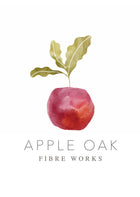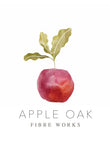

Logwood Dye
Dye Colour: Blue, Purple & Black | Collected in the Wild in Haiti
Logwood (Haematoxylum campechianum), also known as Bois de Campeche or Campeachy Wood, is a natural, pH-sensitive dye that originates from wood found in Central America. This versatile dye creates stunning blues, purples, and deep blacks on wool, cotton, and silk. While its colour fastness is considered poor by experienced dyers, Logwood is commonly used in combination with other dyes to achieve rich, deep blacks. Perfect for eco-conscious artists, Logwood is available as cut or ground bark for your dyeing projects.
Colour Fastness: Poor (best used with other dyes for black)
Product Details:
Basic Recipe (Using Ground Bark):
Ingredients:
Instructions:
Alternatively, soak the Logwood chips overnight, then boil for 1 hour before use.
For Logwood extract, please visit our Natural Dye Extracts Page.
Explore the potential of Logwood Dye for a range of vibrant blues, purples, and blacks in your natural dyeing projects!
COCHINEAL DYE ~ Dye colours red, pinks to purples
Origin: Canary Islands, Spain. Organically farmed and processed by Canaturex
I am so delighted to have finally found some organic Cochineal. Lorenzo is one of the very first offering fully traceable Cochineal grown to organic principals.
Cochineal, a powerful dye sourced from tiny insects that feed on cacti, produces stunning shades of purple, red and pink. With just one dye bath, this incredible insect can create a range of hues, from deep, rich reds to delicate, fairy-like pinks. It is derived from the Dactylopius species of insects, and its body contains 19-22% carminic acid.
*To make one kilogram of cochineal dye, it takes about 80,000 to 100,000 insects.
Excellent colour fastness is guaranteed.
---------------------
Recipe for Wool Fibres: Downloadable PDF
Recipe For Plant Fibres: Downloadable PDF
Basic recipe:
6% Cochineal
Wool yarn mordanted with Alum 10%
Soak Cochineal in Water overnight
blend using a stick blender
Add dye to dye bath
Bring to a simmer
Remove any black tar like bubbles
Strain through a cloth and keep to the side
Add yarn to bath simmer for one hour.
Add dye bag to second and any following dye baths.
Organic Ground, Cut, or Whole Hibiscus Flowers
Vibrant Pink & Purple Hues for Dyeing | Cultivated in Egypt
Hibiscus flowers are an excellent choice for natural dyeing, offering stunning shades from light purples to deep pinks and even greens, depending on the mordant used. Ground Hibiscus produces a lighter purple hue on wool, while cut or whole flowers yield more vibrant tones. This pH-sensitive dye is perfect for hobby dyers and children’s activities, as it offers interesting colour shifts - from green to purple to pink - and an experimental approach to dyeing.
Dyeing Tips:
Colour Fastness: Poor (colour may shift with pH changes)
Basic Hibiscus Dye Recipe:
A delightful and experimental natural dye, perfect for adding beautiful, ever-changing shades to your projects!
Join The Natural Dyers & Growers Academy to share your experiences and get support from fellow growers.
ALKANET ~ Dye Colour: Purple, grey
Our ALKANET ROOT is harvested in India. Its colour ranges from purple to blue to grey, depending on the extraction method and mordants used. Please note that alcohol extraction is necessary for obtaining true purples.
Colour fastness: Poor
Though we sell alkanet in our shop, I never use it. It isn't lightfast and due to needing a heated alcoholic solution it can become quite pricey when living in Ireland! However, if you would like to give it a go, alkanet is a mordant dye after extraction.
Join The Natural Dyers & Growers Academy to share your experiences and get support from fellow growers.
We’re not fans of crowded inboxes either, so here’s what you can look forward to in our newsletters:
✨ Updates from the Academy – new workshops, courses, and events
🧶 News from the Dye House – behind-the-scenes, fibre stories, and inspiration
🛍 Shop highlights – fresh arrivals, special offers, and exclusive sales
And of course, you’re always in control — unsubscribe anytime with a single click at the bottom of any email.
As a little welcome gift, enjoy 5% off your first order in our webshop with the code WELCOMEPOP.
Happy making! 🌿







